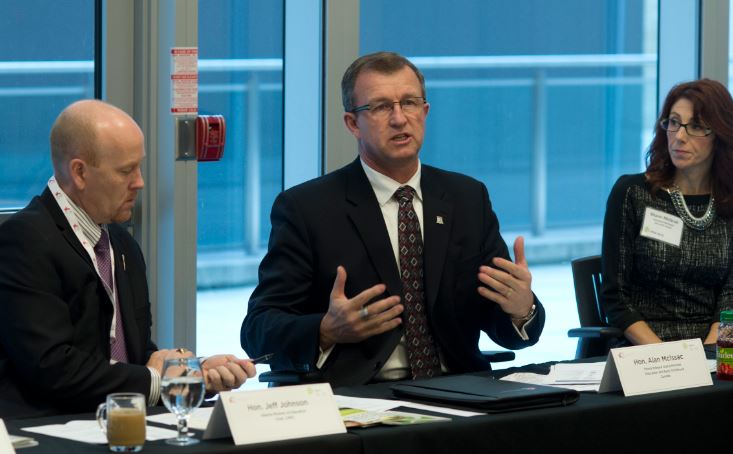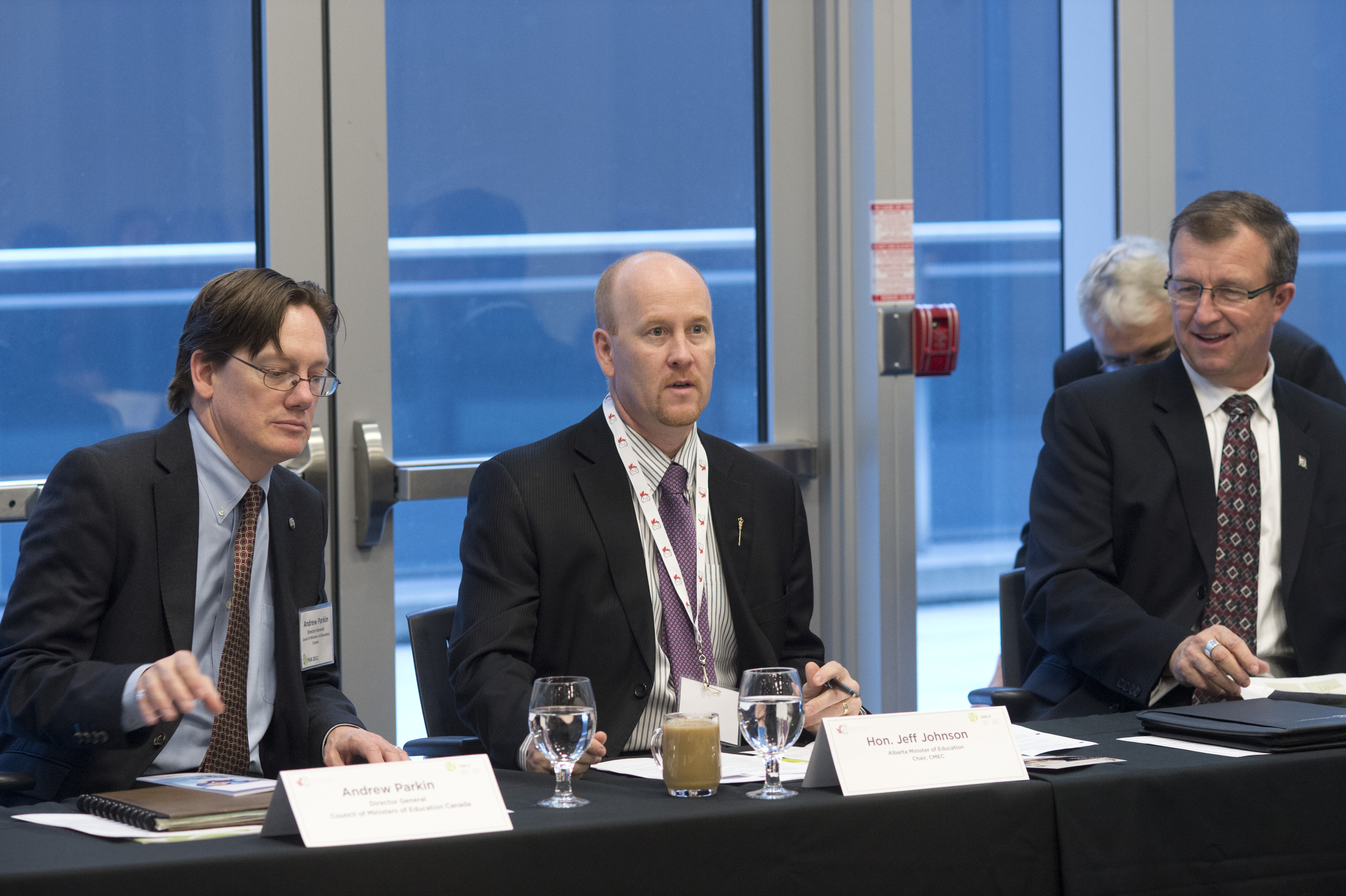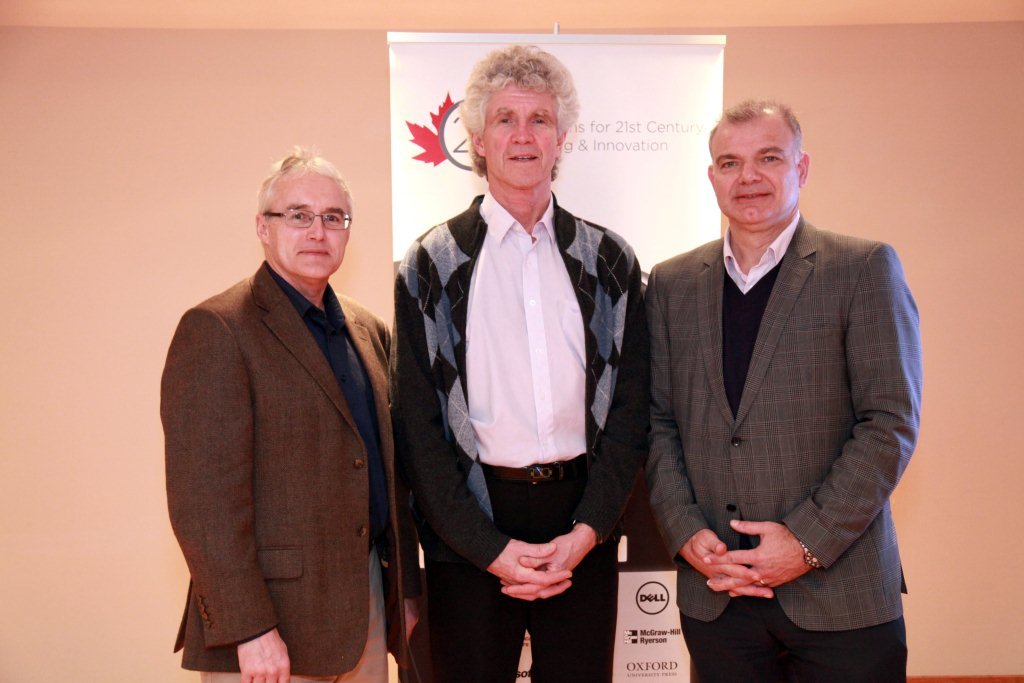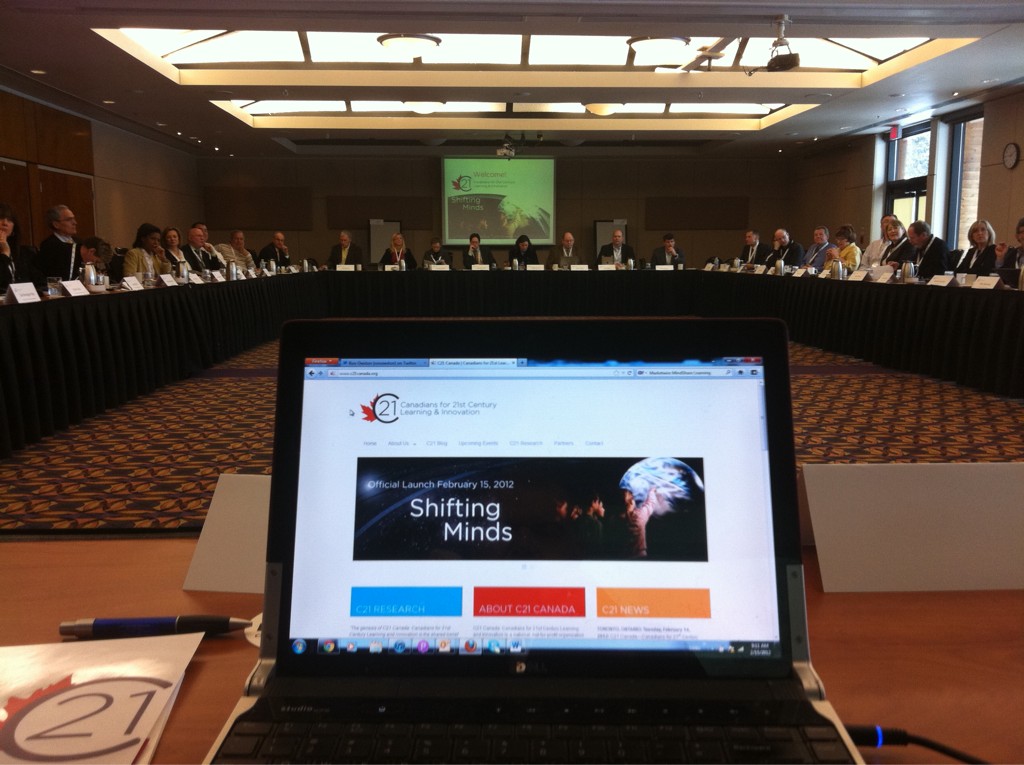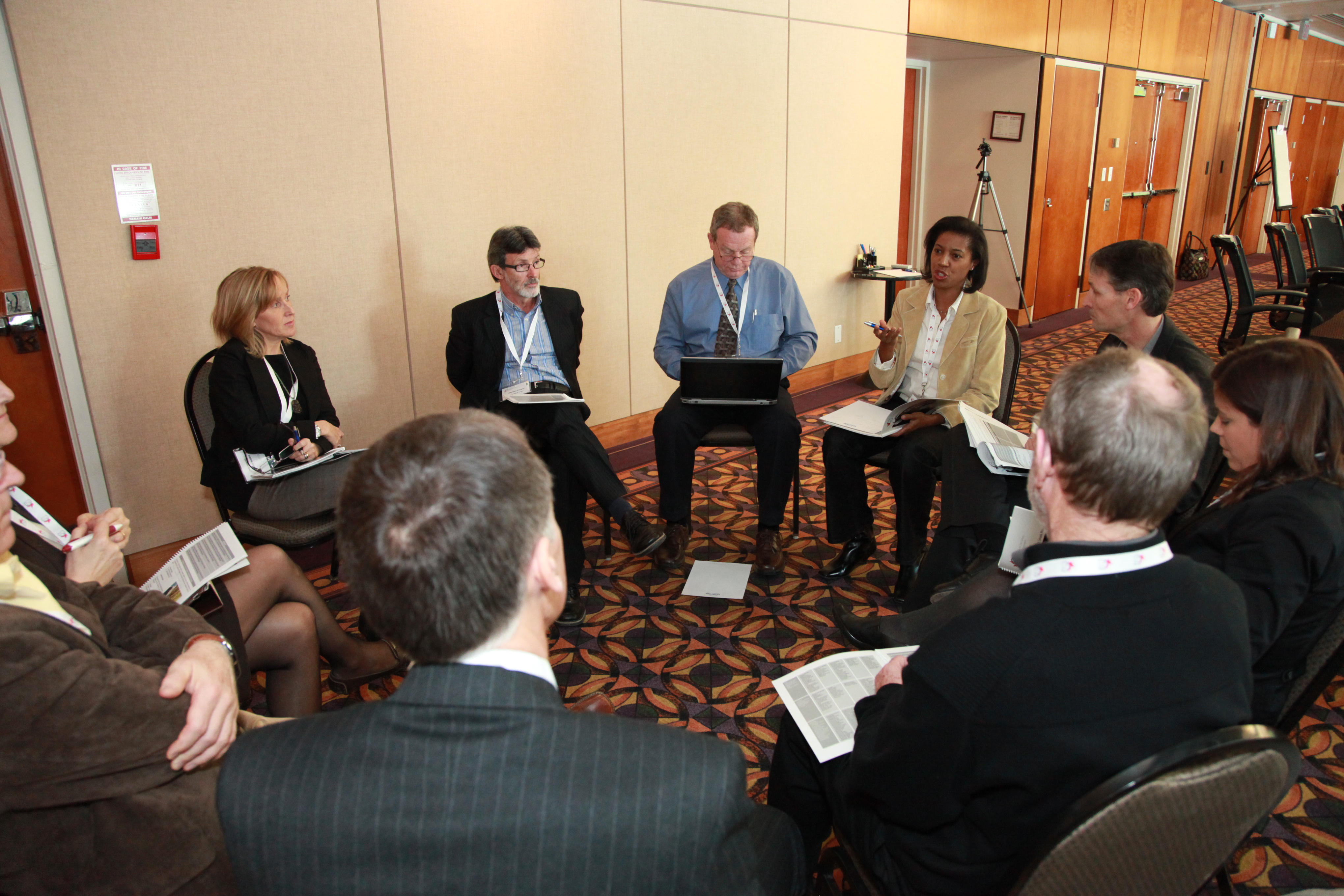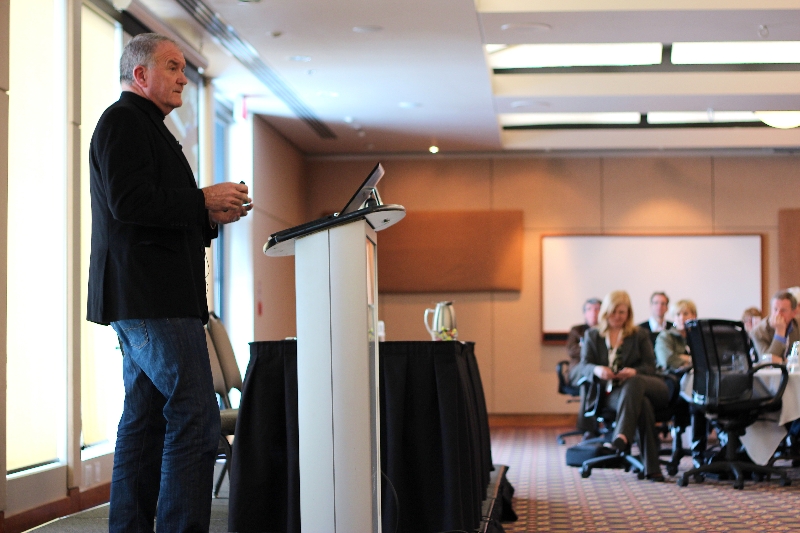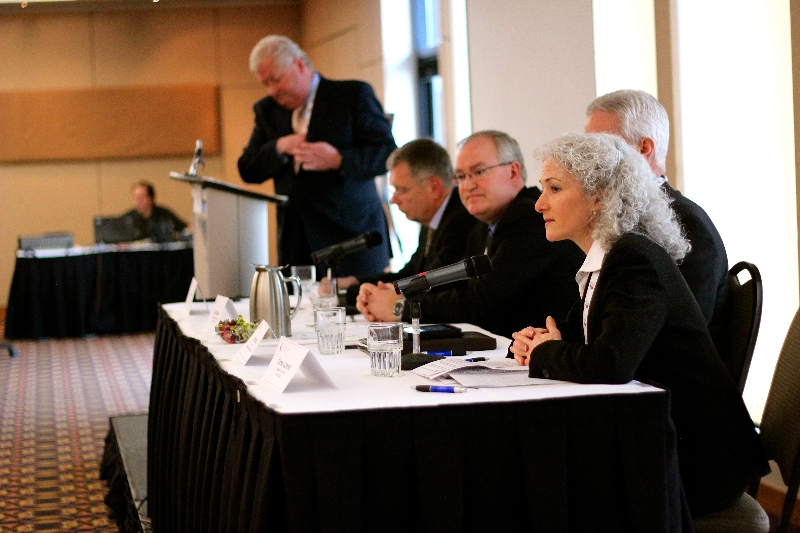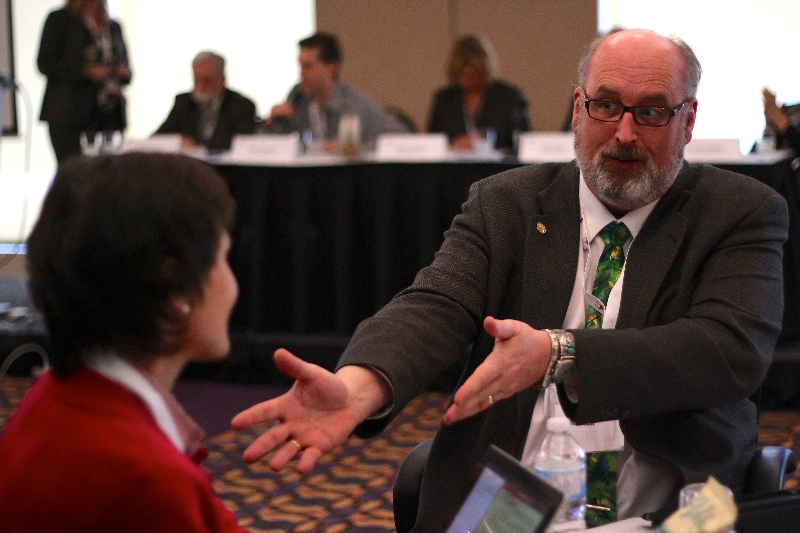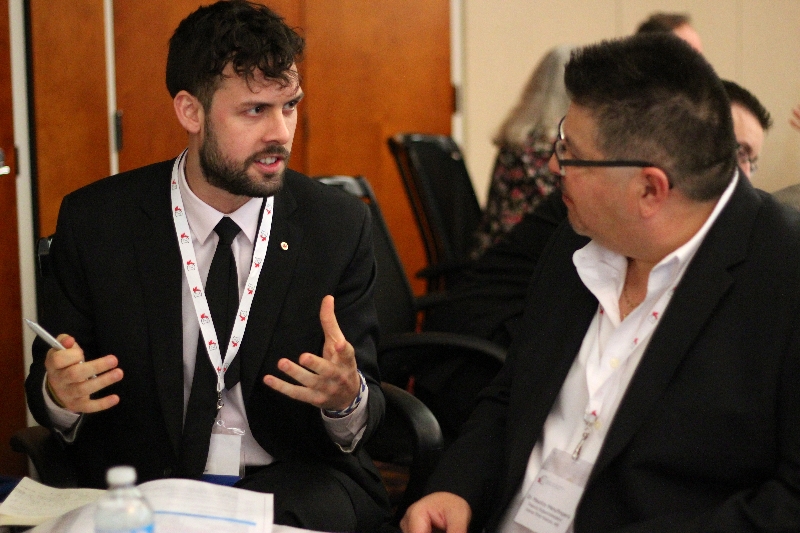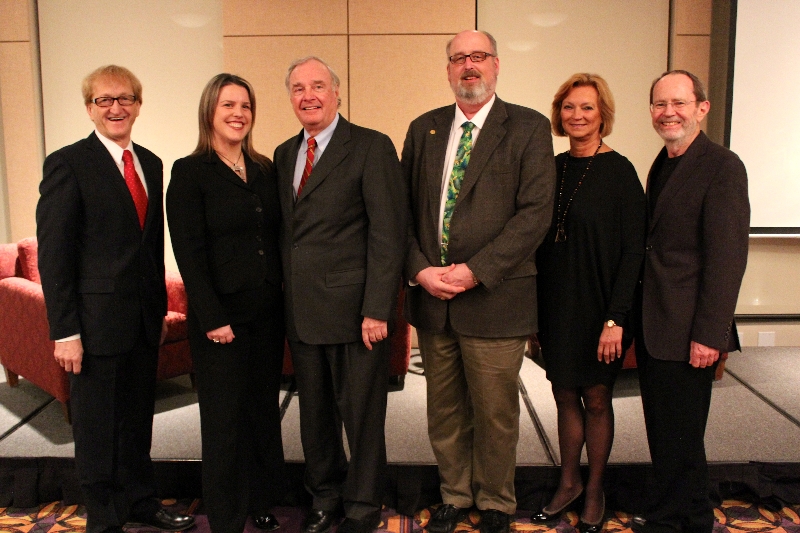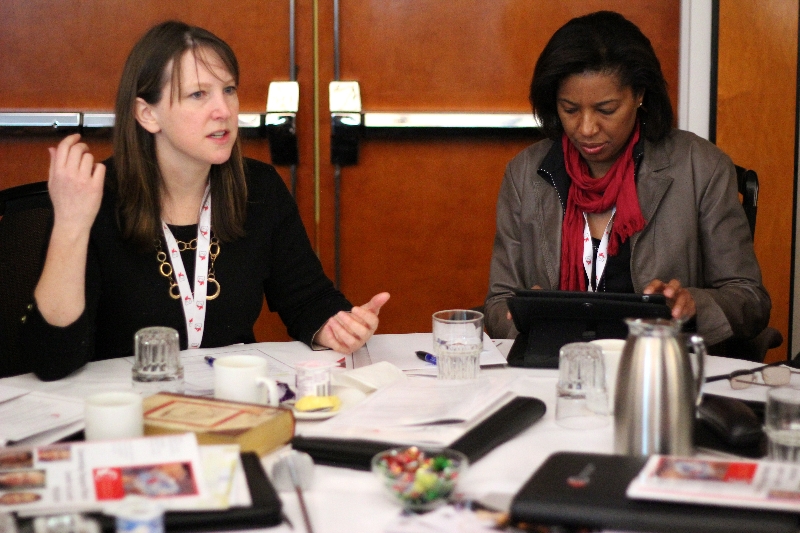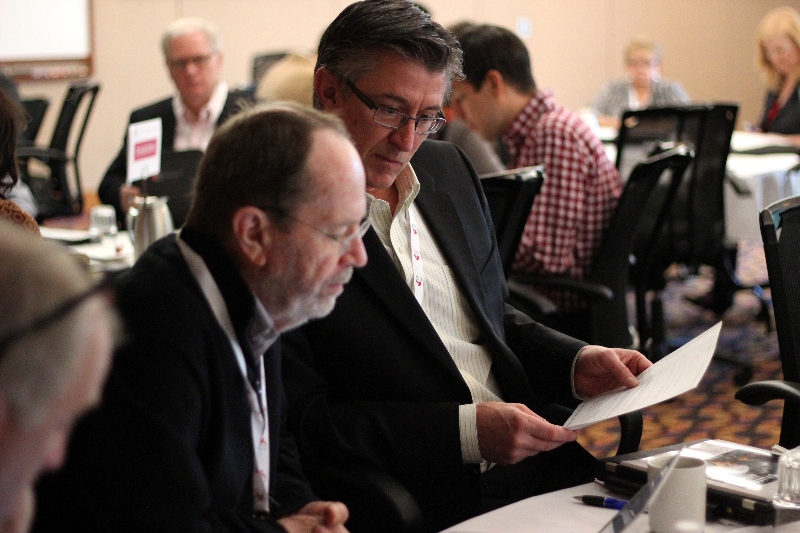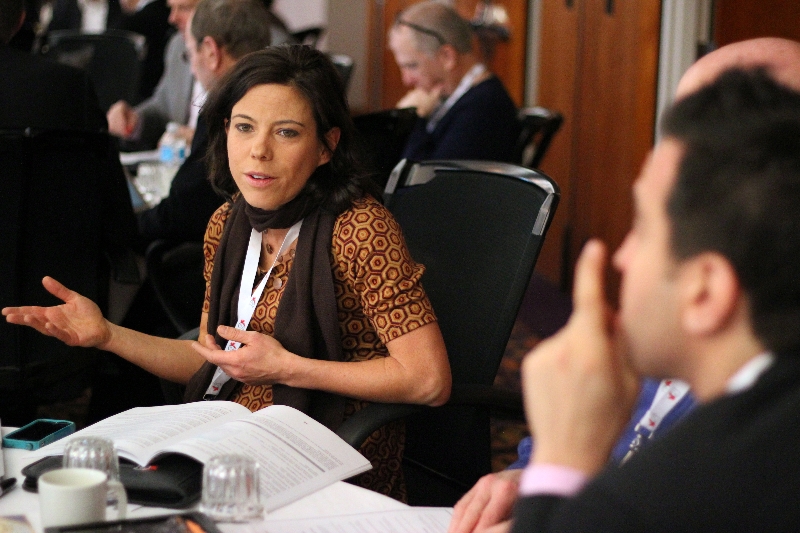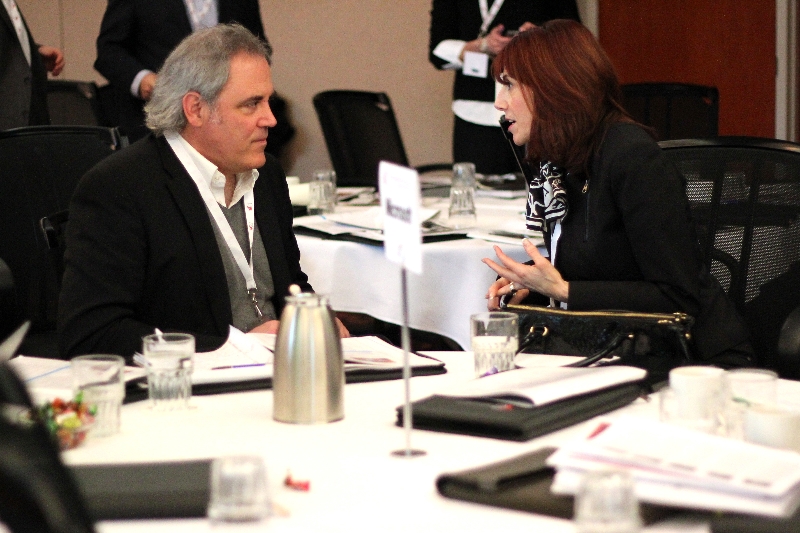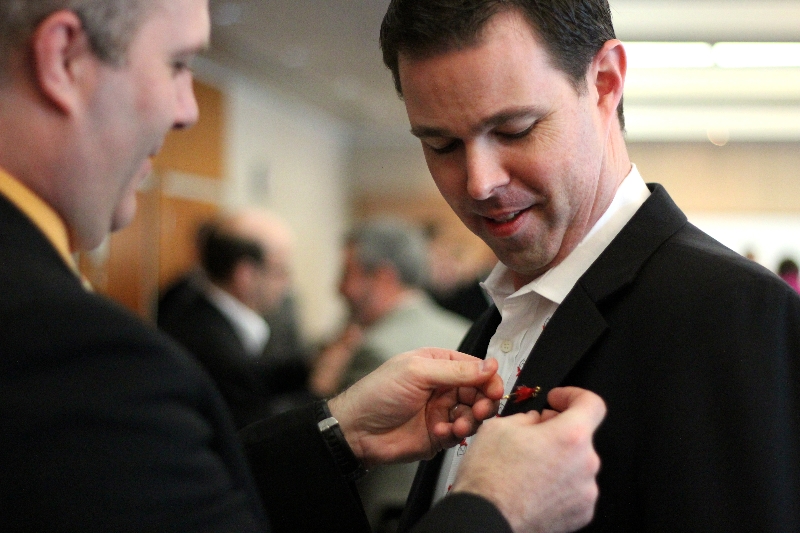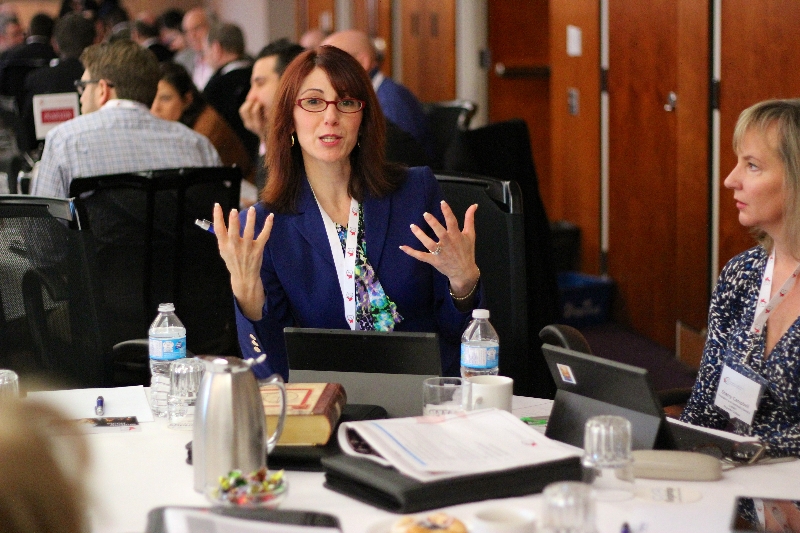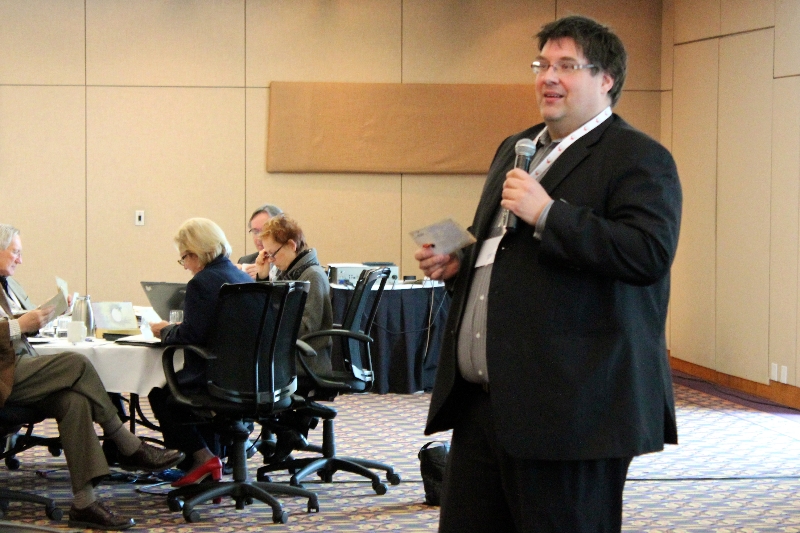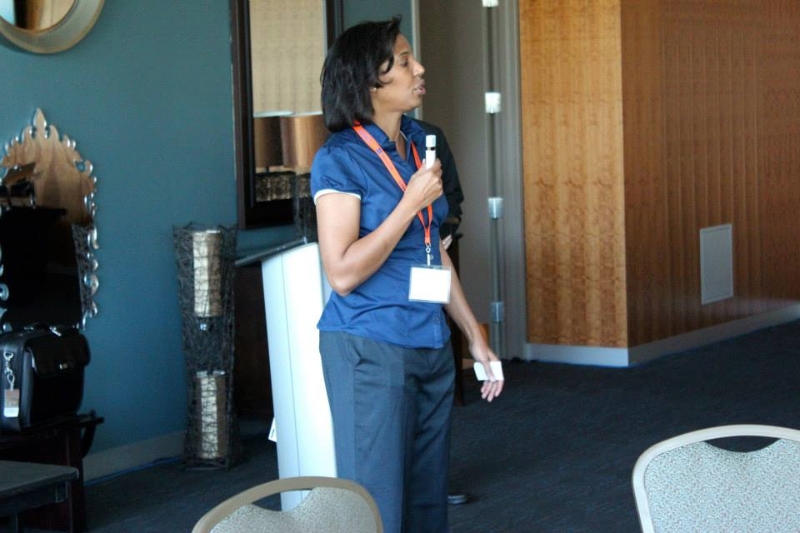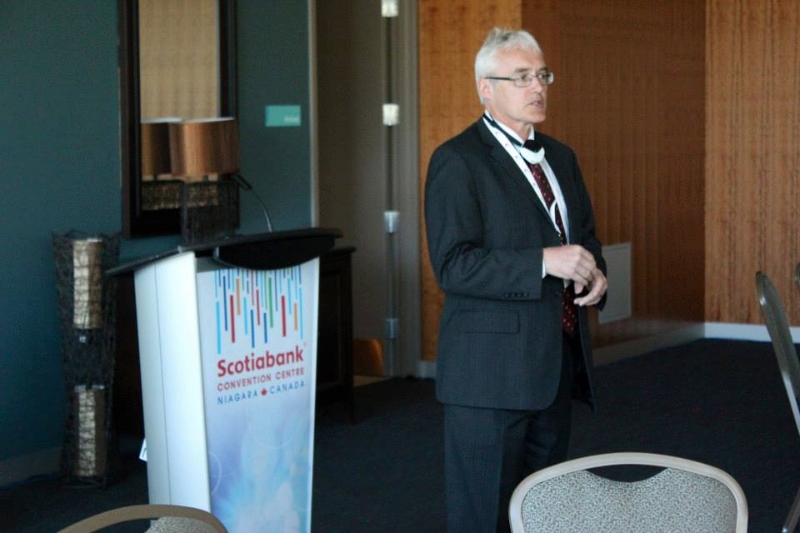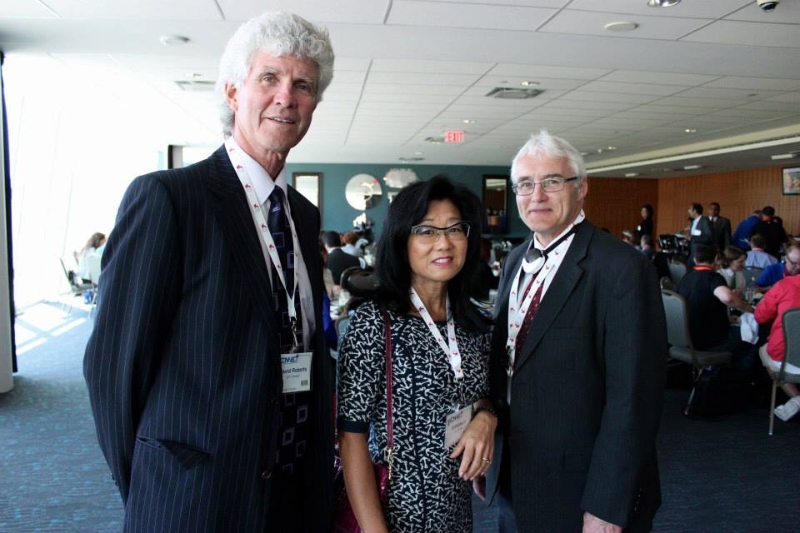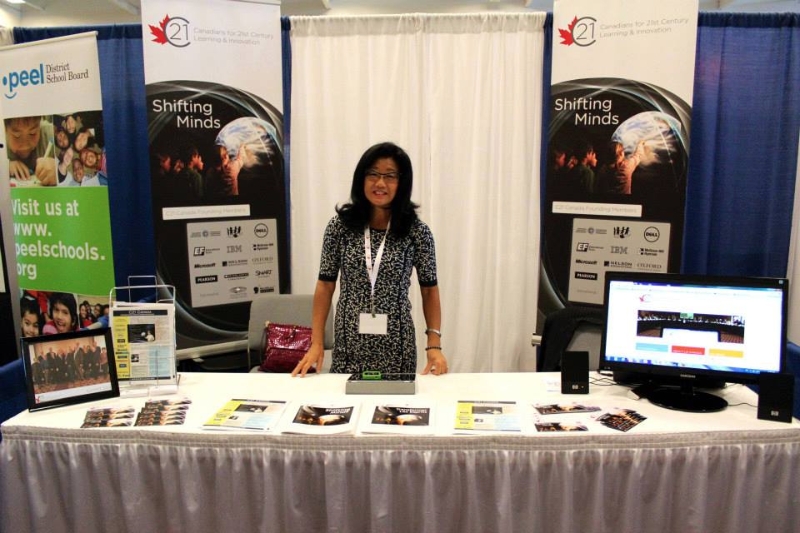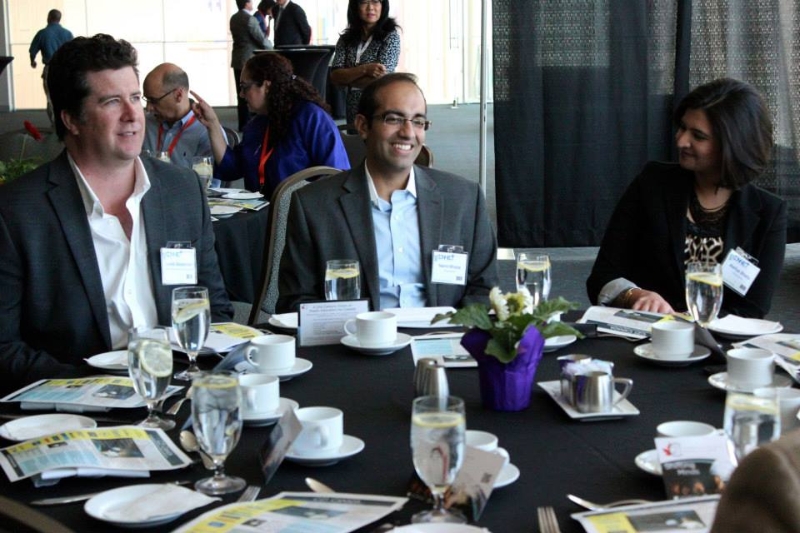A C21 CANADA DISCUSSION PAPER
Introduction
In today’s innovation driven and competitive world, highly skilled people are the new economic and social drivers. In this context, two core questions are facing leaders in Canada: How does Canada nurture creative and innovative talent; and how does Canada address the emerging skills gap? On December 3rd, 2013 delegates to the Learning and Skills Roundtable hosted by the Council of Ministers of Education Canada (CMEC) and C21 Canada (C21) had a chance to share views on these two important questions. There is no question that additional dialogue is required. C21 Canada has prepared this Discussion Paper to contribute to the conversation.
The knowledge and digital age is witnessing fundamental and transformational shifts in economies and societies. The need to position Canadians for success within this rapidly shifting environment is highlighting the importance of learning, skills and innovation. A paper commissioned by the Canadian Council of Chief Executives (CCCE) entitled Competing in the 21st Century Skills Race http://www.ceocouncil.ca/publication/competing-in-the-21st-century-skills-race (December 2012) compares Canada’s and China’s performances in three broad areas: general literacy and numeracy; the number of students enrolled in science, technology, engineering and mathematics (STEM) programs; and the development of skills that are considered particularly important for innovation, such as critical and creative thinking, collaboration and adaptability. Recognizing China’s phenomenal performance in these three areas the CCCE paper called for Canada to create a National Roundtable on Skills to develop both a vision for the future and a comprehensive strategy to achieve that vision. The Canadian Chambers of Commerce engaged its members in identifying their current priorities and in its publication The Top Ten Barriers to Competitiveness http://www.chamber.ca/advocacy/Booklet_Top_10_Barriers_2013.pdf (2013) highlights skills and productivity as key priorities for action. The CCC notes that … the need for action is urgent. The standard of living of every Canadian depends on how well we as a people respond to the challenge.
Better understanding the complexities of the learning, skills and innovation challenges is a prerequisite to collaborative action. Despite its growing public profile, few fully understand the nature, scope and inter-related nature of the issues involved. The following commentary is offered as a contribution to the dialogue on this critically important topic. Each section is followed by a question intended to spark the creative thinking of all involved.
21st Century Competencies
In the knowledge and digital age value added knowledge creation drives innovation. Thus, the demand for creative and innovative people highly skilled in using modern digital technologies is escalating. The Organization for Economic Cooperation and Development (OECD) and other international organizations, along with numerous global learning experts, have called for public education systems to be transformed to better engage learners and to nurture a new set of 21st century competencies. The OECD calls for these actions as prerequisites to positioning societies and economies for success in the knowledge and digital era. The need for Canada’s education systems to infuse these 21st century competencies into learning is urgent in the context of sustaining the country’s economic competitiveness and social progress. Current and projected shortages of such talent are emerging as one of the key elements of the global skills gap.
C21 Canada is a national coalition of education and business leaders advocating Canada’s public education systems to be transformed to address this reality. C21 Canada’s Shifting Minds vision document http://old.c21canada.org/ calls for an enhanced focus on 21st century competencies and use of modern technologies to position Canada with creative new leaders and a highly innovative workforce. To date, while Canadians can point to local pockets of innovation in public education, systemic change will demand bold leadership. While the federal government has identified a set of essential skills it feels Canadians require for success in the labour market http://www10.hrsdc.gc.ca/english/ShowProfile.aspx?v=202, more work needs to be done to ensure these essential skills are aligned with the 21st century competencies identified in global research and reflected in C21 Canada’s Shifting Minds vision and framework. And since only provinces and territories have the jurisdictional authority in Canada to implement the changes required in public education, CMEC has a critical national leadership role in advocating for these changes to occur on an urgent basis, in both the provincial and national interest.
What is the future leadership role of CMEC in fostering an accelerated pace of change by calling for 21st century models of learning in all public education systems in Canada?
Demographic Shifts
In his book People Without Jobs Jobs Without People http://tinyurl.com/q6vkhf5 Dr. Rick Miner explains how Canada’s aging demographic means fewer people available for the workforce, creating a gap in available talent for employers. Exacerbating this issue is the relatively low literacy levels of some members of the labour force, limiting their ability to upgrade skills to stay current with changing labour market requirements. In a paper commissioned by C21 Canada, Dr. Miner provides updated information on the impact of demographic shifts on Canada’s labour force (Attached).
What collective response is required by Canadians to lessen the impact of national and regional demographic shifts on meeting the country’s labour force requirements?
Trades
A shortage in the trades sector is perhaps the issue most commonly associated with the skills gap. The genesis of this gap is multi-faceted. First, for years many parents and educators have been discouraging youth from pursuing this career path. The “branding” of trades by society as an inferior choice to higher education has led to less demand from students for trades related training and a shift away from offering such courses in Canada’s high schools. Mike Rowe, a popular actor in the United States, is speaking extensively on this topic http://www.youtube.com/watch?v=ls1YhhMHdNY and has founded an organization to address the issue in that country http://profoundlydisconnected.com/. Rowe contends that society has done a huge disservice by casting trades as a second-rate choice to higher education, when in fact society is increasingly demanding people skilled in trades and the field offers very credible business and employment opportunities. Rowe’s insights on the United States experience parallel the experience in Canada. Fewer entries into trades related fields coupled with baby boomers retiring are creating a gap between supply and labour market requirements. From a regional perspective and according to Statistics Canada http://www.statcan.gc.ca/daily-quotidien/130926/dq130926a-eng.htm there is a growing trend of people moving to western Canada to seek employment. While these western economies often cite the lack of skilled trade people as curtailing growth, the shift westwards of many trade people seeking work and higher wages is creating gaps in the availability of highly skilled trade people in the regions vacated. The decline in apprenticeship training, partially a function of baby boomers inhabiting the available positions for a generation, has exacerbated this issue.
Does Canada need to rebrand trades as a desirable profession, reintroduce trades within public education, and strengthen apprenticeship training opportunities within the private sector?
STEM
Another area of concern to many is in the fields of science, technology, engineering and mathematics (STEM). The root of this challenge is cited as being too few of Canada’s youth pursuing studies and careers STEM related fields. Most of society’s technology innovations originate in these fields and increasing the number of students pursuing STEM related learning and careers is seen as a prerequisite to Canada’s future competitive position. LetsTalkScience, an organization dedicated to promoting science in Canada, has recently published an update on Canada’s STEM related challenges http://www.letstalkscience.ca/our-research/spotlight2013.html.
One of the challenges that must be addressed in the STEM context is the overall disengagement of students in their own learning. The Canadian Education Association (CEA) recently published the results on surveys conducted on students on their level of interest and engagement in school. An infographic on student engagement, http://www.cea-ace.ca/sites/cea-ace.ca/files/cea-2011-wdydist-infographic.pdf illustrates that less than 50% of high school age students felt intellectually engaged in their own learning. Clearly, we need to transform both what we teach (21st century competencies) and how we teach. Essential elements of the new 21st century teaching and learning model include: personalized and inquiry driven learning; and teaching methodologies that are project based, collaborative, ICT empowered and authentic (real world applications). If Canada is to entice more Canadians into STEM related fields, the students must be inspired and find the relevancy to sustain their interest. Although this 21st century model of learning must apply to all areas of public education, it is highly relevant to fostering students interest in pursuing STEM related fields.
How does Canada encourage more of its learners to pursue STEM related fields of study and careers?
Canada’s International Ranking
On October 8, 2013 the OECD released the findings of its inaugural international survey on adult competencies http://www.oecd.org/site/piaac/. The survey provided an unprecedented glimpse into whether the participating countries are equipping their citizens with the competencies and skills they need for success in the 21st Century. CMEC provides Information on the PIAAC results at http://www.piaac.ca/. In a study commissioned by C21 Canada, Satya Brink provides an overview of how the recent PIAAC results relate to C21 Canada’s Shifting Minds position statement and the 21st century competencies contained therein (Attached). Dr. Brink offers specific targets for Canada to aspire to relative to literacy, numeracy and digital competencies. PIAAC shows that while Canada is faring relatively well in international comparative rankings, the country is not among the top performing nations.
On December 3rd, 2013, the OECD released the latest results for the Programme for the International Student Assessment (PISA) in the areas of literacy, numeracy and science. The latest survey, conducted in 2012, focused on numeracy (math). The results show that while Canada remains competitive relative to other nations, there is a consistent downward trend in achievement levels. Together, these international assessments offer Canadians important insights into how their education systems are performing over time and relative to other leading countries, and forecasts Canada’s future in relation to economic competitiveness and social progress. For the PISA results, see: http://www.cmec.ca/252/Programs-and-Initiatives/Assessment/Programme-for-International-Student-Assessment-(PISA)/PISA-2012/index.html.
What action is required to improve Canada’s international rankings in learning and skills development?
What is Real?
A recent study released by the TD bank debunks the notion of a skills gap crisis, noting that the issue is limited to a fairly small number of sectors. The TD report does however call for bold and collaborative action on the skills agenda front.
http://www.td.com/document/PDF/economics/special/JobsInCanada.pdf.
A recent CBC Cross Country Check-Up episode hosted by the popular Rex Murphy focused on the question Does Canada Need A National Jobs Strategy?
http://www.cbc.ca/checkup/episode/2013/11/17/does-canada-need-a-national-jobs-strategy/. One of the questions raised was whether there is a skills gap in Canada, or simply a lack of economic growth resulting in too few jobs being created. The point here is not whether anyone is a fan of the subject show, it is that the issue of learning and skills is complicated while at the same time it is growing in the public conscience, and Canadians will be increasingly looking for to their governments and private sector leaders to provide real direction and concrete solutions.
Conclusions
What does this all mean?
The need for a comprehensive Canadian learning, skills and innovation agenda has never been more apparent. Canada’s competitiveness in a global and innovation driven environment demands a higher level of coordination among the various levels of governments and the private sector than has been the case historically. What is the specific theme that will engender a unified effort? Who convenes the various partners? What form should the discourse take? These are all key questions that must be tackled on an urgent basis.
Global leaders realize that creative leaders and innovative labour forces are pre-requisite to success in the knowledge and digital era. The public profile of learning and skills in Canada is growing. At the same time there is ongoing debate between the federal and provincial levels of government on the priorities for action, with disagreements ranging from the Job Creation Grants model to immigration policy. Aligning Canada’s immigration policy with a national or pan Canadian learning, skills and innovation agenda would appear to be highly strategic. However, in the absence of such an agenda, any question of alignment is moot.
At the same time the need to ensure Canada’s Aboriginal people benefit from an equitable and modern education experience is both a moral and economic imperative. Aboriginal people is the fastest growing sector of Canada’s population and in many of the country’s provinces and territories people of Aboriginal heritage will be essential leaders and contributors to new economic development, the labour market, and social progress. As Canada addresses the need for a learning, skills and innovation agenda, engaging Canada’s Aboriginal leaders in meaningful dialogue in the design and implementation of such an agenda is a prerequisite to success.
The issues are complicated, and yet the prize for a highly collaborative response is Canada’s economic growth and social prosperity. It would appear to be worthy of some dialogue and coordinated effort.
The penultimate question for Canada is twofold: Who will lead and how do we collaborate to accelerate the collective response?
Prepared by:
C21 Canada





